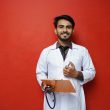Introduction
In today’s fast-paced world, law practice technology is transforming how attorneys work, from AI‐driven research to cloud‐based file sharing and blockchain contracts. Embracing new legal tech brings huge benefits—faster case preparation, better client service, and lower costs. Yet it also creates fresh challenges and legal technology risks such as data breaches, ethical dilemmas, and potential malpractice claims. This article explores key technologies reshaping law firms, outlines their associated risks, and offers clear strategies for safe, effective adoption.
1. Artificial Intelligence in Legal Research
Benefits
- Faster Case Law Searches: AI tools like ROSS Intelligence scan thousands of cases in seconds.
- Predictive Analytics: Platforms forecast case outcomes based on past judgments.
- Document Automation: AI drafts pleadings, contracts, and discovery requests quickly.
Risks
- Bias and Inaccuracy: AI models trained on flawed data can produce biased or incorrect results.
- Overreliance: Lawyers might trust AI output without proper review, risking errors.
- Confidentiality Concerns: Using third‐party AI services can expose sensitive client data.
2. Cloud Computing and Collaboration
Benefits
- Remote Access: Lawyers can securely access files from anywhere.
- Scalability: Firms pay only for needed storage and processing power.
- Cost Savings: Reduced IT overhead and hardware maintenance.
Risks
- Data Breaches: Hackers may target cloud providers to steal client information.
- Service Outages: Downtime can halt case work and court filings.
- Jurisdictional Issues: Storing data on servers in other countries may conflict with data protection laws.
3. Cybersecurity Essentials for Law Firms
Common Threats
- Phishing Attacks: Fake emails trick staff into revealing passwords.
- Ransomware: Malicious software locks files until a ransom is paid.
- Insider Risks: Disgruntled employees might leak or delete data.
Mitigation Strategies
- Regular Training: Teach staff to spot phishing and follow strong password policies.
- Multi‐Factor Authentication (MFA): Add an extra layer of login security.
- Routine Backups: Keep encrypted backups offsite to restore data after attacks.
- Endpoint Protection: Install antivirus and intrusion detection on all devices.
4. E-Discovery and Data Management
Benefits
- Efficient Document Review: Platforms like Relativity use analytics to flag key documents.
- Cost Control: Automating review reduces billable‐hour spikes.
- Compliance Tracking: Automated logs document chain of custody.
Risks
- Privilege Waiver: Mishandling privileged data in search filters can waive protection.
- Over‐Production: Producing too much irrelevant data increases costs and risk.
- Data Integrity: Corrupted files may be inadmissible in court.
Best Practices
- Define clear data‐review protocols.
- Use privilege‐review tools and human oversight.
- Validate data integrity before production.
5. Blockchain and Smart Contracts
Benefits
- Immutable Records: Blockchain ledgers prevent tampering with transaction histories.
- Self‐Executing Contracts: Smart contracts automate payments and obligations.
- Transparency: All parties view the same unalterable data.
Risks
- Coding Errors: Bugs in contract code can cause unintended outcomes.
- Legal Uncertainty: Jurisdictions may not recognize smart contracts as binding.
- Privacy Issues: Public blockchains expose transaction details.
Mitigation Strategies
- Engage expert auditors to review smart contract code.
- Use permissioned (private) blockchains for sensitive data.
- Draft traditional legal agreements to back up smart contract terms.
6. Remote Hearings and Virtual Courts
Benefits
- Access to Justice: Clients in remote areas can attend hearings online.
- Cost Reduction: Less travel saves time and money for lawyers and clients.
- Scheduling Flexibility: Easier to coordinate multiple participants.
Risks
- Technical Failures: Connection issues can disrupt proceedings.
- Security Vulnerabilities: Unauthorized guests could access confidential hearings.
- Evidence Integrity: Digital exhibits risk tampering or formatting errors.
Best Practices
- Test platforms and connections before hearings.
- Use secure, court‐approved video services with waiting rooms.
- Submit exhibits in standardized digital formats with hash verification.
7. Ethical Considerations in Tech Adoption
Key Concerns
- Unauthorized Practice of Law (UPL): Over‐automating legal services can cross into UPL.
- Client Consent and Disclosure: Clients must understand how their data is used.
- Competence Requirements: Lawyers must stay current on tech tools to meet professional standards.
Compliance Steps
- Update engagement letters to cover tech use and data handling.
- Provide ongoing tech training and maintain competency records.
- Follow the ABA’s Formal Opinion on technology competence.
8. Professional Liability and Malpractice Insurance
Emerging Exposures
- Data Breach Claims: Clients may sue for costs arising from lost or stolen data.
- Advice Based on Faulty AI: Incorrect AI analysis leading to bad legal advice.
- Third‐Party Vendor Failures: Outsourced services that fail to meet obligations.
Insurance Solutions
- Review existing errors & omissions (E&O) policies for cyber and tech coverage.
- Consider standalone cyber liability insurance.
- Implement vendor risk‐management programs to vet third‐party providers.
9. Steps to Implement a Safe Tech Roadmap
- Conduct a Technology Audit: Inventory current tools, data flows, and security controls.
- Prioritize Risks: Rank tech risks by likelihood and impact on clients and reputation.
- Develop Policies: Craft clear guidelines on acceptable use, data privacy, and incident response.
- Invest in Training: Provide regular workshops on new tools and cybersecurity essentials.
- Monitor and Update: Continuously review tech performance and adjust policies as needed.
Conclusion
Modern law practice technology—from AI research tools and cloud storage to blockchain contracts and virtual courts—offers transformative benefits for efficiency, client service, and competitive edge. Yet each innovation brings legal technology risks in data security, ethics, and liability. By adopting a clear government strategy—conducting audits, prioritizing risks, training staff, and strengthening cybersecurity—law firms can harness new tech safely and confidently. As the legal landscape evolves, staying informed and vigilant ensures that your firm delivers top‐notch service, maintains client trust, and steers clear of malpractice pitfalls in the digital age.









